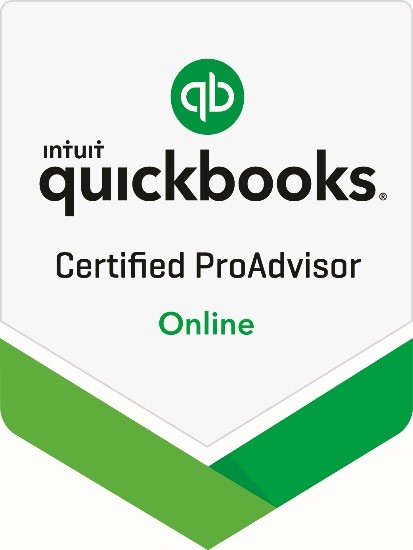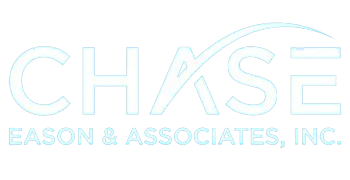Contact Us
Get in Touch
Have questions or need assistance? Contact us today to discuss your financial goals.
Subscribe to our newsletter to receive news, updates, and valuable tips.
What's the best way to borrow to make consumer purchases?
Under the Tax Cuts and Jobs Act, for tax years 2018 through 2025, interest on home equity loans is only deductible when the loan is used to buy, build or substantially improve the taxpayer's home that secures the loan. Prior to 2018, interest on up to $100,000 of home equity loan debt used for any purpose was tax deductible -- unlike other consumer-related interest expenses (e.g., car loans and credit cards).
What special deductions can I get if I'm self-employed?
You may be able to take an immediate Section 179 expense deduction of up to $1,250,000 for 2025 ($1,220,000 in 2024), for equipment purchased for use in your business, instead of writing it off over many years. There is a phaseout limit of $3,130,000 in 2025 ($3,050,000 in 2024). Additionally, self-employed individuals can deduct 100 percent of their health insurance premiums. You may also be able to establish a retirement plan for yourself, such as an individual or self-employment 401(k) plan, a Simplified Employee Pension (SEP) or a SIMPLE IRA, and deduct your contributions.
Can I ever save tax by filing a separate return instead of jointly with my spouse?
You sometimes may benefit from filing separately instead of jointly. Consider filing separately if one spouse has large medical expenses deductions, or casualty losses and the spouses' incomes are about equal.
Separate filing may benefit such couples because each spouse's adjusted gross income (AGI) "floor" for taking the deduction will be computed separately. (If medical expenses not paid via tax-advantaged accounts or reimbursable by insurance exceed 7.5% of your AGI, you can claim an itemized deduction for the amount exceeding that floor.)
Why should I participate in my employer's cafeteria plan or FSA?
Medical and dental expenses are deductible to the extent they exceed 7.5% of your adjusted gross income (AGI) and only if you itemize deductions rather than claiming the standard deduction. So you might not be able to benefit from this deduction. If your employer offers a Flexible Spending Account (FSA), Health Savings Account, or cafeteria plan, these plans permit you to redirect a portion of your salary to pay these expenses with pretax dollars.
What's the best way to give to charity?
If you're planning to make a charitable gift, giving appreciated long-term capital assets generally makes more sense instead of selling the assets and giving the charity the after-tax proceeds. Donating the assets instead of the cash avoids capital gains tax on the sale, and you can obtain a tax deduction for the full fair-market value of the property.
I have a large capital gain this year. What should I do?
If you also have an investment on which you have an accumulated loss, it may be advantageous to sell it before year-end. Capital gains losses are deductible up to the amount of your capital gains plus $3,000 ($1,500 for married filing separately). If you are planning on selling an investment on which you have an accumulated gain, it may be best to wait until after the end of the year to defer payment of the taxes for another year (subject to estimated tax requirements).
What other tax-favored investments should I consider?
For growth stocks you hold for the long term, you pay no tax on the appreciation until you sell them. No capital gains tax is imposed on appreciation at your death.
Interest on state or local bonds ("municipals") is generally exempt from federal income tax and tax by the issuing state or locality. Therefore, interest paid on such bonds is somewhat less than that paid on commercial bonds of comparable quality. However, for individuals in higher brackets, municipal bonds' rate of return may be higher than the after-tax rate of return for higher-interest commercial bonds.
For high-income taxpayers who live in high-income-tax states, investing in Treasury bills, bonds, and notes can pay off in tax savings. The interest on Treasuries is exempt from state and local income tax.
What tax-deferred investments are possible if I'm self-employed?
Consider setting up and contributing as much as possible to a retirement plan. These are allowed even for a sideline or moonlighting business. Several plans are available, such as an individual or self-employment 401(k) plan, a Simplified Employee Pension (SEP) and a SIMPLE IRA.
How can I make tax-deferred investments?
Through tax-deferred retirement accounts, you can invest some of the money you would have otherwise paid in taxes to increase the amount of your retirement fund. Many employers offer plans where you can elect to defer a portion of your salary and contribute it to a tax-deferred retirement account. For most companies, these are known as 401(k) plans. For many other employers, such as nonprofit organizations, a similar plan called a 403(b) is available.
Some employers match a portion of employee contributions to such plans. If this is available, you should structure your contributions to receive the maximum employer-matching contribution.
What can I do to defer income?
If you are due a bonus at year-end, you may be able to defer receipt of these funds until January. This can defer the payment of taxes (other than the portion withheld) for another year. If you're self-employed, defer sending invoices or bills to clients or customers until after the new year begins. You can also defer some of the tax, subject to estimated tax requirements.
You can achieve the same effect of short-term income deferral by accelerating deductions, for example, paying a state-estimated tax installment in December instead of the following January due date. But through 2025, watch out for the TCJA's $10,000 limit on the state and local tax deduction ($5,000 for separate filers).
Why should I defer income to a later year?
Most individuals are in a higher tax bracket in their working years than during retirement. Deferring income until retirement may result in paying taxes on that income at a lower rate. Deferral can also work in the short term if you expect to be in a lower bracket in the following year or if you can take advantage of lower long-term capital gains rates by holding an asset a little longer.
Travel and Entertainment: Frequently Asked
Can I deduct the cost of meals on days I call on customers or clients away from my office?
Generally not. Usually, you can only deduct costs of meals when you're away from home overnight. Even so, the deduction is allowed only to the extent of 50 percent of the cost of meals and related tips. Also, because business-related entertainment expenses were eliminated under tax reform, starting in 2018, the deduction for meals at entertainment events is deductible (at 50%) only when costs for meals are itemized separately from entertainment costs.
For tax years 2021 and 2022, the deduction was allowed at 100 percent if purchased from a restaurant (eat-in or take-out).
Must I report employer reimbursements for travel, entertainment and meals?
Under tax reform, miscellaneous itemized deductions subject to the 2-percent floor were eliminated for tax years 2018-2025. However, prior to tax reform (i.e., for tax years prior to 2018), the following applied:
It depends. If you give your employer a detailed expense accounting, return any excess reimbursement, and meet other requirements, you don't have to report the reimbursement and you don't deduct the expenses. This means that any deduction limits are imposed on your boss, not you, and the 2-percent limit on miscellaneous itemized deductions won't affect your travel, entertainment and meals costs.
What are the limits on deductible travel, entertainment and meals costs?
Prior to tax reform (i.e., for tax years before 2018), the deduction for business entertainment and business meals could not exceed 50 percent of the cost. Note that due to the coronavirus pandemic, business-related meals purchased from a restaurant (eat-in or take-out) were deductible at 100 percent for tax years 2021 and 2022. There are no dollar limits. Expenses must be "ordinary and necessary" (meaning appropriate and helpful) and not "lavish or extravagant," but this doesn't bar deluxe accommodations, travel or meals. Additionally, there were additional special limitations on skyboxes and luxury water travel.
Starting in 2018 and continuing through tax year 2025, no deduction is allowed for business entertainment. Tax reform also eliminated deductions for expenses relating to sporting events such as those for skybox expenses (previously 50%), tickets to sporting events (previously 50%), and transportation to and from sporting events (previously 50%).
Can I deduct living expenses on temporary assignment away from the area where I live and work?
Yes. Living expenses at the temporary work site are away from home travel expenses. An assignment is temporary if it's expected to last no more than a year. If it's expected to last more than a year, the new area is your tax home, so you can't deduct expenses there as away from home travel.
What expenses can I deduct while traveling away from home?
A wide range of expenses can be deducted while traveling away from home.
Here are the main ones:
Transportation fares, or actual costs (or a standard per mile rate) of using your own vehicle. Also, transportation costs of getting around in the work area-to and from hotels, restaurants, offices, terminals, etc.
Lodging and meals (subject to the 50 percent limit on meals; 100 percent in 2021 and 2022)
Phone, fax, laundry, baggage handling
Tips related to the above
What can't be deducted as travel expenses?
The following travel expenses cannot be deducted:
Costs of commuting between your residence and a work site, but it's a deductible business trip if your residence is your business headquarters.
Travel as education
Job hunting in a new field or looking for a new business site
What can I deduct for business entertainment?
Prior to 2018 and the passage of the TCJA, the following generally applied:
There should be a business discussion before, during, and after the meals and entertainment.
The deduction for entertainment and meals is limited to 50 percent of the cost. In 2021 and 2022 restaurant meals were deductible at 100 percent.
There were further limitations for club dues, entertainment facilities, and skyboxes.
Spouses of business associates and your own spouse could be included in the entertainment in settings where spouse attendance is customary.
After tax reform, and starting in 2018, the rules changed and the entertainment expense deduction was eliminated entirely with the exception of certain activities such as office holiday parties, which remain 100% deductible. For example, the deduction for business entertainment expenses is eliminated but meals remain deductible at 50 percent (100 percent in 2021 and 2022). In addition, the following now applies:
Entertainment-related Meals. Prior to tax reform expenses for meals purchased during entertainment activities such as meals included at a sporting event were deductible at 50%. Starting in 2018; however, the deduction is eliminated unless the costs of meals are invoiced separately.
Sporting Events. Tax reform eliminated all deductions relating to sporting events including deductions for sky box expenses (previously 50%), tickets to sporting events (previously 50%), tickets to qualified charitable events (previously 100%), and transportation to and from sporting events (previously 50%).
Club Memberships. While there was never a deduction for club dues, business owners were able to take a 50% deduction for expenses incurred at a business, recreational, or social club as long as it was related to their trade or business. Under tax reform, however, that deduction has been eliminated.
How do I prove my travel and entertainment expenses?
If you're an employee who is reimbursed for expenses you'll need to file an expense report for your employer, which is a written accounting of your expense while on travel. If you received a cash advance, you'll also need to return to the employer any amounts in excess of your expenses.
Some per diem arrangements and mileage allowances called "accountable plans" take the place of detailed accounting to the employer, if time, place and business purpose are established.
For tax years 2018 through 2025, miscellaneous itemized deductions (Form 1040, Schedule A) have been eliminated due to tax reform (Tax Cuts and Jobs Act of 2017). Prior to tax reform (i.e., tax years prior to 2018), the following held true:
Where expenses aren't fully reimbursed by your employer or excess reimbursements aren't returned, detailed substantiation to IRS is required and, if you're an employee, your deductions are subject to the 2-percent floor on miscellaneous itemized deductions. In addition, your expense records should be "contemporaneous," that is, recorded close to the time expenses are incurred.
"Nanny Tax" Rules: Frequently Asked Questions
What kinds of household workers are covered by nanny tax rules?
Household workers include anyone who does work in or around your home such as babysitters, nannies, health aides, private nurses, maids, caretakers, yard workers, and similar domestic workers. In addition, the worker must be your employee, which means you can control not only what work is done, but how it is done.
It does not matter whether the work is full-time or part-time, or that you hired the worker through an agency. On the other hand, if only the worker can control how the work is done, the worker is not your employee, but is self-employed.
What must I do if I think my worker or worker-to-be isn't a U.S. citizen?
It is unlawful for you to knowingly hire or continue to employ an alien who cannot legally work in the United States.
When you hire a household employee to work for you on a regular basis, he or she must complete the employee part of the Immigration and Naturalization Service (INS) Form I-9, Employment Eligibility Verification. You must verify that the employee is either a U.S. citizen or an alien who can legally work here and then complete the employer part of the form. Keep the completed form for your records.
What are my tax duties if I have a household employee?
You may need to withhold and pay Social Security and Medicare taxes, or you may need to pay federal unemployment tax, or you may need to do both.
If you pay cash wages of $2,800 or more in 2025 ($2,700 or more in 2024) to any one household employee, withhold and pay Social Security and Medicare taxes.
If you pay total cash wages of $1,000 or more in any calendar quarter during the current calendar year or the prior year to household employees, you must pay unemployment tax.
If I hire teenagers as babysitters or for yard work, must I withhold and pay tax for them?
When figuring whether you paid an employee $2,800 or more in 2025 ($2,700 or more in 2024) to babysitters or others, you generally don't count wages paid to an employee who is under age 18 at any time during the year.
If the employee is a student, providing household services is not considered his or her principal occupation. However, you should count these wages if providing household services is the employee's principal occupation.
Are there ways to pay my household employee that minimize the employment tax?
Wages subject to employment tax do not include the value of food, lodging, clothing, and other non-cash items you give your household employee. However, cash you give your employee in place of these items is included in wages.
If you reimburse the amount your employee pays to commute to your home by public transit (bus, train, etc.), do not count reimbursements up to $325 per month in 2025 ($315 per month in 2024) as wages.
Further, if you reimburse your employee for the cost of parking at or near a location from which your employee commutes to your home, do not count reimbursements up to $325 per month in 2025 ($315 per month in 2024) as wages.
I'm not sure yet whether I'll pay enough this year to require withholding. What should I do?
You should withhold the employee's share of Social Security and Medicare taxes if you expect to pay your household employee Social Security and Medicare wages of $2,800 or more in 2025 ($2,700 or more in 2024).
If you withhold the taxes but then actually pay the employee less than $2,800 in 2025 ($2,700 in 2024) in Social Security and Medicare wages for the year, you should repay the employee.
Okay, I've withheld tax on the employee and I owe the employer's share. How do I pay these amounts?
You pay withheld taxes as part of your regular income tax obligation. You don't deposit them periodically. If you make an error by withholding too little, you should withhold additional taxes from a later payment. If you withhold too much, you should repay the employee.
Do I have to reduce the worker's take-home pay by the tax on that pay?
If you prefer to pay your employee's Social Security and Medicare taxes from your own funds, you do not have to withhold them from your employee's wages. The Social Security and Medicare taxes you pay to cover your employee's share must be included in the employee's wages for income tax purposes. However, they are not counted as Social Security and Medicare wages or as federal unemployment (FUTA) wages.
In what cases do I owe unemployment tax?
The federal unemployment tax is part of the federal and state program under the Federal Unemployment Tax Act (FUTA) that pays unemployment compensation to workers who lose their jobs. You may owe only the FUTA tax or only the state unemployment tax, or both. To find out whether you will owe state unemployment tax, contact your state's unemployment tax agency.
If you pay cash wages to household employees totaling $1,000 or more in any calendar quarter of the current calendar year or the prior year, the first $7,000 of cash wages you pay to each household employee in the current calendar year are FUTA wages. If you pay less than $1,000 cash wages in each calendar quarter of the current calendar year but you had a household employee in the prior calendar year, the cash wages you pay in the current calendar year may still be FUTA wages. They are FUTA wages if the cash wages you paid to household employees in any calendar quarter of the current calendar year or the prior year totaled $1,000 or more.
Do not withhold the FUTA tax from your employee's wages. You must pay it from your own funds.
Do I need to withhold federal income tax?
You are not required to withhold federal income tax from wages you pay a household employee. You should withhold federal income tax only if your household employee asks you to withhold it and you agree. The employee must give you a completed Form W-4, Employee's Withholding Allowance Certificate. If you agree to withhold federal income tax, you are responsible for paying it to the IRS.
You figure federal income tax withholding on both cash and non-cash wages you pay. Measure non-cash wages by the value of the non-cash item. Do not count as wages any of the following items:
Meals provided at your home for your convenience.
Lodging provided at your home for your convenience and as a condition of employment.
Up to $325 per month in 2025 ($315 per month in 2024) for bus or train tokens (passes) you give your employee, or in some cases for cash reimbursement you make for the amount your employee pays to commute to your home by public transit.
Up to $325 per month in 2025 ($315 per month in 2024) to reimburse your employee for the cost of parking at or near your home or at or near a location from which your employee commutes to your home.
Any income tax you pay for your employee without withholding it from the employee's wages must be included in the employee's wages for federal income tax purposes. It is also counted as Social Security, Medicare, and FUTA wages.
What about Earned Income Credit (EIC)? What must I do?
Certain workers can take the earned income credit (EIC) on their federal income tax return. This credit reduces their tax or allows them to receive a payment from the IRS if they do not owe tax. You must give your household employee a notice about the EIC if you agree to withhold federal income tax from the employee's wages and the income tax withholding tables show that no tax should be withheld. Even if not required, you are encouraged to give the employee a notice about the EIC if his or her 2025 wages are less than $68,675 ($66,819 for 2024).
The employee's copy (Copy B) of the IRS Form W-2,Wage and Tax Statement has a statement about the EIC on the back. If you give your employee that copy by January 31 (as discussed under Form W-2), you do not have to give the employee any other notice about the EIC.
What federal tax forms must I file if I have a household employee?
Form W-2 and Schedule H of Form 1040. Specifically:
A separate Form W-2, Wage and Tax Statement, must be filed for each household employee to whom you pay Social Security and Medicare wages or wages from which you withhold federal income tax. Give Copies B, C, and 2 to your employee by January 31, and send Copy A of Form W-2 with Form W-3, Transmittal of Wage and Tax Statements, to the Social Security Administration by January 31.
Use Schedule H (Form 1040), Household Employment Taxes, to report the federal employment taxes for your household employee if you pay the employee Social Security and Medicare wages, FUTA wages, or wages from which you withhold federal income tax.
File Schedule H with your federal income tax return. If you are not required to file a tax return, file Schedule H by itself.
Tax Benefits of Higher Education: Frequently Aske
What Types of tax breaks are available for costs of my children's higher education?
A wide variety of tax relief is available, but you'll need to choose which break(s) to claim or which savings plan(s) to use based on your individual tax situation. You generally can't use two different kinds of relief for the same item. For instance, you can't take a tax credit for expenses that were paid from a tax-advantaged education savings plan or a tax-free scholarship, Pell grant, or employer-provided educational assistance. You also can't take both the American Opportunity Tax Credit and the Lifetime Learning Credit for the same student for the same year. There may also be limits based on adjusted gross income.
What Are education tax credits?
A tax credit can be an especially valuable tax break because it reduces the actual tax you owe dollar-for-dollar, providing much more tax savings than a deduction of an equal amount. Two tax credits are available for education costs:
American Opportunity Tax Credit (AOTC). This tax break covers 100% of the first $2,000 of tuition and related expenses and 25% of the next $2,000 of expenses. The maximum AOTC, per student, is $2,500 per year for the first four years of postsecondary education in pursuit of a degree or recognized credential.
Lifetime Learning Credit (LLC). If you’re paying postsecondary education expenses beyond the first four years, check whether you’re eligible for the LLC (up to $2,000 per tax return).
If you file married-filing separately, you cannot claim these credits.
Which costs are eligible? Qualifying tuition and related expenses refer to tuition and fees, and course materials required for enrollment or attendance at an eligible education institution. They now include books, supplies, and equipment needed for a course of study whether or not the materials must be purchased from the educational institution as a condition of enrollment or attendance.
"Related" expenses do not include room and board, student activities, athletics (other than courses that are part of a degree program), insurance, equipment, transportation, or any personal, living, or family expenses. Student-activity fees are included in qualified education expenses only if the fees must be paid to the institution as a condition of enrollment or attendance. For expenses paid with borrowed funds, count the expenses when they are paid, not when borrowings are repaid.
If you pay qualified expenses for a school semester that begins in the first three months of next year, you can use the prepaid amount in figuring your credit for this year.
As future year-end tax planning, this rule gives you a choice of the year to take the credit for academic periods beginning in the first 3 months of the year; pay by December and take the credit this year; pay in January or later and take the credit next year.
Eligible students. You, your spouse, or an eligible dependent (someone for whom you can claim a dependency exemption, including children under age 24 who are full-time students) can be an eligible student for whom the credit can apply. If you claim the student as a dependent, qualifying expenses paid by the student are treated as paid by you, and for your credit purposes are added to expenses you paid. A person claimed as another person's dependent can't claim the credit. The student must be enrolled at an eligible education institution (any accredited public, non-profit or private post-secondary institution eligible to participate in student Department of Education aid programs) for at least one academic period (semester, trimester, etc.) during the year.
Income limits. To claim the AOTC or the LLC, your modified adjusted gross income (MAGI) must not exceed $90,000 ($180,000 for joint filers). The credits begin to phase out when MAGI hits $80,000 ($160,000 for joint filers). MAGI generally is the same as AGI. The "modifications" only come into play if you have income earned abroad.
Choosing the credit. You can't claim both credits for the same person in the same year. But you can claim one credit for one or more family members and the other credit for expenses for one or more others in the same year - for example, an AOTC for your child and an LLC for yourself.
Do any tax planning considerations apply to the education tax credit?
For an academic period (quarter, semester, etc.) beginning in the first 3 months of a calendar year, you can pick which year to pay the expense and take the credit. That is, pay in December and take the credit on this year's return when you file in April, or pay in, say, February of next year and take the credit on next year's return the following April.
How does a Coverdell ESA work?
An Coverdell Education Savings Accoount (ESA) allows tax-advantaged saving for education expenses. Here are the details:
No more than $2,000 a year can be contributed to any beneficiary of an ESA in any year and contributors are subject to income limits. Modified AGI cannot exceed $110,000 ($220,000 joint filers).
Contributions aren't deductible and excess contributions are subject to penalty.
Withdrawals are tax-free to the extent used for qualified education expenses.
Contributions can't be made after the student reaches age 18, and the account generally must distribute all funds remaining in the account when the student reaches age 30.
An ESA may be used for primary and secondary education, including paying for room and board of children in private schools, and for computers and related materials whether or not away from home.
There can be a number of ESAs for any student. Various family members, such as grandparents, aunts, and uncles, and siblings--and persons outside the family--can contribute to separate accounts for a student.
The original student beneficiary for the ESA can be changed to another family member, such as a sibling - for example, if the original beneficiary wins a scholarship or drops out.
Funds can be rolled over tax-free from one family member's ESA to another's, for example, to avoid distribution when the first family member reaches age 30.
What are 529 plans?
These college savings plans have been established by almost every state and some private colleges. You invest now to cover future college or vocational school expenses by contributing to a savings plan or buying tuition credits redeemable in the future. Investments grow tax-deferred, and distributions to pay qualified postsecondary school expenses are tax free. You may choose any state's plan, regardless of where you live. Funds from 529 plans can be used for up to $10,000 of elementary and secondary school tuition per year and up to $10,000 of student loan debt per beneficiary.
Even if a 529 plan is used to finance a student's education, the student or the student's parents still may be eligible to claim the AOTC or LLC, as long as expenses paid with the 529 plan distribution aren’t used to claim the credit.
How do Coverdell ESAs and 529 Plans differ?
Coverdell ESAs limit annual contributions to $2,000 a year per student; 529 plans allow a much larger contributions. Coverdell ESAs allow a wide choice of investments; 529 plan investment choices are limited. Coverdell ESAs are more flexible when it comes to funding elementary and secondary school expenses.
Can my traditional IRA be used for education?
Yes. The 10% penalty on withdrawal under age 59-1/2 won't apply, but ordinary income tax will apply to at least some of the withdrawal.
Can a Roth IRA be used for education?
Yes, generally under the same terms as traditional IRAs. Also, ordinary income tax is somewhat less likely or may be smaller in amount, than with traditional IRAs.
Can I deduct student loan interest?
Personal interest expense generally isn't deductible, but student loan interest expense is deductible, subject to the following limits:
You must be the person liable on the debt and the loan must be for education only (not an open line of credit).
Your 2025 MAGI can't exceed $200,000 ($195,000 for 2024) if you're a joint filer or $100,000 ($95,000 for 2024) if you're a single filer. The deduction begins to phase out when 2025 MAGI hits $170,000 ($165,000 for 2024) for joint filers and $85,000 ($80,000 for 2024) for single filers. Married couples filing separately cannot take the deduction.
You can't be claimed as a dependent on someone else's tax return.
The maximum deduction is $2,500.
If I take a home equity loan to pay education expenses, can I deduct the interest?
For tax years prior to 2018, you could deduct interest expense on up to $100,000 of home equity loan debt used to pay educational and other non-home-related expenses. This deduction wasn't subject to the AGI limits that apply to the student loan interest expense deduction. However, for tax years 2018 through 2025, taxpayers are no longer able to deduct interest on home equity loans taken out for non-home-related purposes.
What tax treatment applies if my student loan debt is canceled?
Forgiven debt is typically treated as taxable income, but tax-free treatment is available for student loan debt forgiven after Dec. 31, 2020, and before Jan. 1, 2026.
Warning: Some states may tax such forgiven debt.
Even after 2025, forgiven student loan debt might be excluded from taxable income in certain circumstances.
What's the tax relief for education savings bonds?
Interest on redemption of Series EE bonds is tax-exempt if you redeem them in a year you have qualified education expenses. Exemption depends on the amount of your income in the year you redeem the bond.
Must I pay tax on my employer's payment or reimbursement of my education expenses?
Maybe not. Up to $5,250 can be tax-free. Exemption can apply to graduate level courses.
Can I take tax deductions for education I pay for that helps me in my work?
For tax years prior to 2018, the answer was, yes, if it was to maintain or improve skills in your present job, but no, if it was to meet minimum requirements of that job, or to qualify to enter a new business. Furthermore, employee's deductions were subject to the 2% of AGI floor on miscellaneous itemized deductions. However, under the Tax Cuts and Jobs Act, for tax years 2018 through 2025, employee business-related deductions (including education expenses) are disallowed. Self-employed individuals are still able to deduct qualifying educational expenses on Schedule C.
Annuities: Frequently Asked Questions
What are variable annuities?
Variable annuity contracts are sold by insurance companies. Purchasers pay a premium of, for example, $10,000 for a single payment variable annuity or $50 a month for a periodic payment variable annuity. The insurance company deposits these premiums in an account that is invested in a portfolio of securities. The value of the portfolio goes up or down as the prices of its securities rise or fall.
After a specified period of time, which often coincides with the year the purchaser turns age 65, the assets are converted into annuity payments. Although the insurance company guarantees a minimum payment, these payments are variable, since they depend on the periodic performance of the underlying securities.
Almost all variable annuity contracts carry sales charges, administrative charges, and asset charges. The amounts differ from one contract to another and from one insurance company to another.
Fixed annuity contracts are not considered securities and are not regulated by the SEC (Securities and Exchange Commission).
How do annuities work?
An annuity, in essence, is insurance against "living too long." In contrast, traditional life insurance guards against "dying too soon." Briefly, here is how annuities function: An investor hands over funds to an insurance company. The insurer invests the funds. At the end of the annuity's term, the insurer pays the investor his or her investment plus the earnings. The amount paid at maturity may be a lump sum or an annuity, which is a set of periodic payments that are guaranteed as to amount and payment period.
Earnings that occur during the term of the annuity are tax-deferred and an investor is not taxed until the amounts are paid out. Because of the tax deferral, your funds have the chance to grow more quickly than they would in a taxable investment.
Should I invest in annuities?
There are two reasons to use an annuity as an investment vehicle:
You want to save money for a long-range goal, and/or
You want a guaranteed stream of income for a certain period of time.
Annuities lend themselves well to funding retirement, and, in certain cases, education costs.
One negative aspect of an annuity is that you cannot get to your money during the growth period without incurring taxes and penalties. The tax code imposes a 10 percent premature withdrawal penalty on money taken out of a tax-deferred annuity before age 59-1/2, and insurers impose penalties on withdrawals made before the term of the annuity is up. The insurers' penalties are termed "surrender charges," and they usually apply for the first seven years of the annuity contract.
These penalties lead to a de facto restriction on the use of annuities as an investment. It really only makes sense to put your money in an annuity if you can leave it there for at least ten years, and only when the withdrawals are scheduled to occur after age 59-1/2. This is why annuities work well mostly for retirement needs, or for education funding in cases where the depositor will be at least 59-1/2 when withdrawals begin.
Annuities can also be effective in funding education costs where the annuity is held in the child's name under the provisions of the Uniform Gifts to Minors Act. The child would then pay tax on the earnings when the time came for withdrawals. A major drawback to this planning technique is that the child is free to use the money for any purpose, not just education costs.
If an investment adviser recommends a tax-deferred variable annuity, should you invest it? Or would a regular taxable investment be better?
Generally, you should be aware that tax-deferred annuities very often yield less than regular investments. They have higher expenses than regular investments, and these expenses eat into your returns. On the plus side, the annuity provides a death benefit. You should also be aware that there may be a commission on the product an investment adviser may be entitled to a commission on the product he or she is recommending.
Should a retiree purchase an immediate annuity?
At first glance, the immediate annuity would seem to make sense for retirees with lump-sum distributions from retirement plans. After all, an initial lump-sum premium can be converted into a series of monthly, quarterly or yearly payments, representing a portion of principal plus interest, and guaranteed to last for life. The portion of the periodic payout that is a return of principal is excluded from taxable income.
However, there are risks. For one thing, when you lock yourself into a lifetime of level payments, you aren't guarding against inflation. You are also gambling that you will live long enough to get your money back. Thus, if you buy a $150,000 annuity and die after collecting only $60,000, the insurer often gets to keep the rest. Unlike other investments, the balance doesn't go to your heirs. Furthermore, since the interest rate is fixed by the insurer when you buy it, you are locking into today's low rates.
You can hedge your bets by opting for what's called a "certain period," which, in the event of your death, guarantees payment for some years to your beneficiaries. There are also "joint-and-survivor" options, which pay your spouse for the remainder of his or her life after you die, or a "refund" feature, in which a portion of the remaining principal is resumed to your beneficiaries.
Some plans offer quasi-inflation adjusted payments. One company offers a guaranteed increase in payments of 10 percent at three-year intervals for the first 15 years. Payments are then subject to an annual cost-of-living adjustment, with a 3 percent maximum. However, for these enhancements to apply, you will have to settle for much lower monthly payments than the simple version.
A few companies have introduced immediate annuities that offer potentially higher returns in return for some market risk. These "variable, immediate annuities" convert an initial premium into a lifetime income; however, they tie the monthly payments to the returns on a basket of mutual funds.
If you want a comfortable retirement income, your best bet is a balanced portfolio of mutual funds. If you want to guarantee that you will not outlive your money, you can plan your withdrawals over a longer time horizon.
How do life annuities differ from life insurance?
While traditional life insurance guards against "dying too soon," an annuity, in essence, can be used as insurance against "living too long." With an annuity, you will receive in return a series of periodic payments that are guaranteed as to amount and payment period. Thus, if you choose to take the annuity payments over your lifetime (there are many other options), you will have a guaranteed source of "income" until your death.
If you "die too soon" (that is, you don't outlive your life expectancy), you will get back from the insurer far less than you paid in. On the other hand, if you "live too long" and outlive your life expectancy you may get back far more than the cost of your annuity--along with the resultant earnings. By comparison, if you put your funds into a traditional investment, you may run out of funds before your death.
What's the down side to buying an annuity?
You cannot get to your money during the growth period without incurring taxes and penalties. The tax code imposes a 10 percent premature-withdrawal penalty on money taken out of a tax-deferred annuity before age 59-1/2 and insurers impose penalties on withdrawals made before the term of the annuity is up. The insurers' penalties are termed "surrender charges," and they usually apply for the first seven years of the annuity contract.
What types of annuities are available?
You can purchase a single-premium annuity, in which the investment is made all at once (perhaps using a lump sum from a retirement plan payout).
With the flexible-premium annuity, the annuity is funded with a series of payments. The first payment can be quite small.
The immediate annuity starts payments right after the annuity is funded. It is usually funded with a single premium, and is usually purchased by retirees with funds they have accumulated for retirement.
With a deferred annuity, payouts begin many years after the annuity contract is issued. Deferred annuities are used as long-term investment vehicles by retirees and non-retirees alike. They are used in tax-deferred retirement plans and as individual tax-sheltered annuity investments, and may be funded with a single or flexible premium.
With a fixed annuity contract, the insurance company puts your funds into conservative, fixed income investments such as bonds. Your principal is guaranteed, and the insurance company gives you an interest rate that is guaranteed for a certain minimum period--from a month to a year, or more. A fixed annuity contract is similar to a CD or a money market fund, depending on length of the period during which interest is guaranteed, and is considered a low risk investment vehicle.
This guaranteed interest rate is adjusted upwards or downwards at the end of the guarantee period.
All fixed annuities also guarantee you a certain minimum rate of interest of 3 to 5 percent for the entirety of the contract.
The fixed annuity is a good annuity choice for investors with a low risk tolerance and a short-term investing time horizon. The growth that will occur will be relatively low. In times of falling interest rates, fixed annuity investors benefit, while in times of rising interest rates they do not.
The variable annuity, which is considered to carry with it higher risks than the fixed annuity (about the same risk level as a mutual fund investment) gives you the ability to choose how to allocate your money among several different managed funds. There are usually three types of funds: stocks, bonds, and cash-equivalents. Unlike the fixed annuity, there are no guarantees of principal or interest. However, the variable annuity does benefit from tax deferral on the earnings.
You can switch your allocations from time to time for a small fee or sometimes for free.
The variable annuity is a good annuity choice for investors with a moderate to high risk tolerance and a long-term investing time horizon.
Today, insurers make available annuities that combine both fixed and variable features.
What are my options for collecting my annuity?
When it's time to begin taking withdrawals from your deferred annuity, you have several choices. Most people choose a monthly annuity-type payment, although a lump sum withdrawal is also possible. The size of your monthly payment depends on several factors including:
The size of the amount in your annuity contract
Whether there are minimum required payments
The annuitant's life expectancy
Whether payments continue after the annuitant's death
Summaries of the most common forms of payment (settlement options) are listed below. Keep in mind that once you have chosen a payment option, you cannot change your mind.
Fixed Amount gives you a fixed monthly amount (chosen by you) that continues until your annuity is used up. The risk of using this option is that you may live longer than your money lasts. If you die before your annuity is exhausted, your beneficiary gets the rest.
Fixed Period pays you a fixed amount over the time period you choose. For example, you might choose to have the annuity paid out over ten years. If you are seeking retirement income before some other benefits start, this may be a good option. If you die before the period is up, your beneficiary gets the remaining amount.
Lifetime or Straight Life payments continue until you die. There are no payments to survivors. The life annuity gives you the highest monthly benefit of the options listed here. The risk is that you will die early, thus leaving the insurance company with some of your funds.
Life with Period Certain gives you payments as long as you live (as does the life annuity) but with a minimum period during which you or your beneficiary will receive payments, even if you die earlier than expected. The longer the guarantee period is, the lower the monthly benefit will be.
Installment-Refund pays you as long as you live and guarantees that, should you die early, whatever is left of your original investment will be paid to a beneficiary.
Joint and Survivor. In one joint and survivor option, monthly payments are made during the annuitants' joint lives, with the same or a lesser amount paid to whoever is the survivor. In the option typically used for retired employees, monthly payments are made to the retired employee, with the same or a lesser amount to the employee's surviving spouse or other beneficiary. In this case, the spouse's (or other co-annuitant's) death before the employee won't affect what the survivor employee collects. The amount of the monthly payments depends on the annuitants' ages and whether the survivor's payment is to be 100 percent of the joint amount or some lesser percentage.
What's the tax on payouts from a qualified plan or IRA annuity?
A tax-qualified annuity is one used to fund a qualified retirement plan, such as an IRA, Keogh plan, 401(k) plan, SEP (Simplified Employee Pension), or some other retirement plan.
Any nondeductible or after-tax amount you put into the plan is not subject to income tax when withdrawn
The earnings on your investment are not taxed until withdrawal.
If you withdraw money before the age of 59 1/2, you may have to pay a 10 percent penalty on the amount withdrawn in addition to the regular income tax. One of the exceptions to the 10 percent penalty is for taking the annuity out in equal periodic payments over the rest of your life.
Once you reach the age after which retirement plan required minimum distributions (RMDs) must begin (age 73 for 2024 through 2032), you will have to start taking withdrawals in certain minimum amounts specified by the tax law (with exceptions for Roth accounts and certain other retirement accounts of employees still working).
Is it a good idea to buy annuities for my IRA or qualified plan?
Though this is sometimes done, no tax advantage is gained by putting annuities in such a plan since qualified plans and IRAs as well as annuities are tax-deferred. It might be better, depending on your situation, to put other investments such as mutual funds in IRAs and qualified retirement plans, and hold annuities in your individual account.
How will my annuity payouts be taxed?
Payouts are taxed differently for qualified and non-qualified plans. These differences are summarized below.
Qualified and Non-Qualified Annuities
A tax-qualified annuity is one used to fund a qualified retirement plan, such as an IRA, Keogh plan, 401(k) plan, SEP (Simplified Employee Pension), or some other retirement plan. The tax-qualified annuity, when used as a retirement savings vehicle, is entitled to all of the tax benefits-and penalties--that Congress saw fit to attach to such plans.
The tax benefits are:
The amount you put into the plan is not subject to income tax, and/or
The earnings on your investment are not taxed until withdrawal.
A non-qualified annuity, on the other hand, is purchased with after-tax dollars. You still get the benefit of tax deferral on the earnings.
Tax Rules for Qualified Annuities
When you withdraw money from a qualified plan annuity that was funded with pre-tax dollars, you must pay income tax on the entire amount withdrawn.
Once you reach the age after which retirement plan required minimum distributions (RMDs) must begin (age 73 for 2024 through 2032), you will have to start taking withdrawals, in certain minimum amounts specified by the tax law.
Tax Rules for Non-Qualified Annuities
With a non-qualified plan annuity that was funded with after-tax dollars, you pay tax only on the part of the withdrawal that represents earnings on your original investment.
If you make a withdrawal before the age of 59-1/2, you will pay the 10 percent penalty only on the portion of the withdrawal that represents earnings.
With a non-qualified annuity, you are not subject to RMDs after age 73.
What tax must my beneficiaries or heirs pay if my annuity continues after my death?
Taxes may apply to your beneficiary (the person you designate to take further payments) or your heirs (your estate or those who take through the estate if you didn't designate a beneficiary).
Income tax. Annuity payments collected by your beneficiaries or heirs are subject to tax on the same principles that would apply to payments collected by you.
Exception: There's no 10 percent penalty on withdrawal under age 59-1/2 regardless of the recipient's age, or your age at death.
Estate tax. The present value at your death of the remaining annuity payments is an asset of your estate and subject to estate tax with other estate assets. Annuities passing to your surviving spouse or to charity would escape this tax.
How should I shop for an annuity?
Check Out The Insurer. Make sure that the insurance company offering it is financially sound. Annuity investments are not federally guaranteed, so the soundness of the insurance company is the only assurance you can rely on. Several services rate insurance companies.
Compare Contracts. For immediate annuities: Compare the settlement options. For each $1,000 invested, how much of a monthly payout will you get? Consider the interest rate and any penalties and charges.
Deferred annuities. Compare the rate, the length of guarantee period, and a five-year history of rates paid on the contract, not just the interest rates.
Variable annuities. Check out the past performance of the funds involved.
If a particular fund has a great track record, ascertain whether the same management is still in place. Although past performance is no guarantee, consistent management will grant you better odds.
What are the added or hidden costs in buying an annuity?
There are costs associated with annuities. Here are the most important items you should be aware of:
Sales Commission. Ask for details on any commissions you will be paying. What percentage is the commission? Is the commission deducted as a front-end load? If so, your investment is directly reduced by the amount of the commission. A no-load annuity contract, or at least a low-load contract, is the best choice.
Surrender Penalties. Find out the surrender charges (that is, the amounts charged for early withdrawals). The typical charge is 7 percent for first-year withdrawals, 6 percent for the second year, and so on, with no charges after the seventh year.
Be sure the surrender charge "clock" starts running with the date your contract begins, not with each new investment.
Other Fees and Costs. Ask about all other fees. With variable annuities, the fees must be disclosed in the prospectus. Fees lower your return, so it is important to know about them. Fees might include:
Mortality fees of 1 to 1.35 percent of your account (protection for the insurer in case you live a long time)
Maintenance fees of $20 to $30 per year
Investment advisory fees of 0.3 percent to 1 percent of the assets in the annuity's portfolios
Other Considerations. Some annuity contracts offer "bail-out" provisions that allow you to cash in the annuity if interest rates fall below a stated amount without paying surrender charges.
There may also be a "persistency" bonus which rewards annuitants who keep their annuities for a certain minimum length of time.
Is it better to take an annuity or a lump-sum distribution?
As in so many areas of retirement planning, that depends upon your particular needs and circumstances.
An annuity preserves the tax shelter for funds not yet paid out as annuity income, continuing to grow tax-free to fund future payouts.
A lump sum withdrawal may be preferable for those in questionable health.
Consider an annuity with a "refund feature" that guarantees a fixed sum to your heirs should you die earlier than expected.
What is a joint and survivor annuity?
A joint and survivor annuity pays a certain annuity during your life and half that amount (it could be more) to your surviving spouse for life.
In almost all cases, the annual amount you will get under a joint and survivor annuity will be less than you would get under an annuity on your life alone.
Can I change from a joint and survivor annuity if it doesn't meet my needs?
Joint and survivor annuities are almost always required in pension plans, and sometimes in other plans. But you and your spouse can still agree to some other form.
Chief reasons for such agreement are so that your child or other family member can share in the income, or to take a lump sum distribution, or to take a larger annual amount over the participant's life alone.
Retirement Assets: Frequently Asked
Will my heirs owe income taxes when they inherit my retirement assets?
Yes, generally under the same rules that would apply to your withdrawals of the same amounts had you lived - unless it's a Roth IRA. A Roth IRA is exempt from federal income tax if the account was opened five years before any withdrawals.
Also, your spouse can roll over your account to their IRA. No early withdrawal penalty applies, regardless of your beneficiary's age. However, a spouse who rolled over to an IRA may owe an early withdrawal penalty on IRA withdrawals taken before age 59 1/2.
Will my heirs owe estate taxes on inherited retirement assets?
Only a small percentage of estates (based on the value of one's assets at death (including large lifetime gifts) are subject to the estate tax, and there is no estate tax on assets passing to a surviving spouse or charity. However, if the estate is subject to federal estate tax (except in 2010, when there was no estate tax), you can deduct the portion of the federal estate tax attributed to the IRA. You also won't have to pay tax on the portion of withdrawals attributed to any nondeductible contributions made to the IRA.
Is estate tax deferred if my heir gets an annuity?
No. The estate is taxed on the annuity's present value.
How can I minimize or eliminate tax on inherited retirement assets?
You can minimize or eliminate tax on inherited retirement assets by using the following methods:
Leave them to your spouse. Doing so saves money owed to estate tax and helps postpone withdrawals subject to income tax - provided your spouse takes no withdrawals before age 59 1/2.
Leave them to charity. Although there's no financial benefit to the family, this saves income and estate taxes.
Leave them to family for life, with the remainder to charity in the form of a charitable remainder trust. This option reduces estate tax with some benefits to family.
Provide life insurance to pay estate tax on retirement assets. The benefit of this option is that it provides estate liquidity, avoiding taxable distributions to pay estate tax.
How should I take distributions from my retirement plan?
If your assets are in a tax-favored retirement fund such as a company or Keogh pension or profit-sharing plan (including thrift and savings plans), 401(k), IRA, or stock bonus plan when it comes time to take distributions, you have several options:
Take everything in a lump sum
Keep the money in the account, with regular distributions or withdrawals on an as-needed basis
Purchase an annuity with all or part of the funds
Take a partial withdrawal (leaving the balance for withdrawal later)
Take a rollover distribution
A combination of any of the above
Your retirement assets may be distributed in kind as employer stock or an annuity or insurance contract. Sometimes certain withdrawal options may be associated with certain retirement plans; for instance, annuities are more common with pension plans. Other types of plans favor the other options, but for the most part, most of these options are available for most plans. And more than likely, you'll want to preserve the tax shelter as long as possible by withdrawing no more than you need at any given time.
Timing your withdrawal can be a factor, too. Withdrawals before age 59 ½ risk a tax penalty. At the other end, withdrawals are generally required to start at age 73 for taxpayers born between 1951 and 1959 (75 for those born in 1960 or later) or face a tax penalty. The only exceptions are Roth IRAs and non-owner-employees still working beyond that age.
When is it best to take a lump-sum distribution from my retirement plan?
Your personal needs should decide. You may need a lump sum to buy a retirement home or business. If your employer requires that you take a lump sum distribution, it may be wise to roll it over into an IRA.
Back To Top
What should I do about my retirement plan assets in my ex-employer's plan if I change jobs?
There are several things you might do depending upon your needs:
If you don't need the assets to live on, try to continue the tax shelter and leave the money where it is.
Transfer or roll over the assets into your new employer's plan if that plan allows it (this can be tricky, though).
If you've decided to start your own business, set up a Keogh and move the funds there.
Roll them over into your IRA.
Can creditors get at my retirement assets?
In general, employer plans such as your 401(k), IRAs, and pension plan funds are protected from general creditors unless you've used these assets as securities against a loan or are entering into bankruptcy. If this is the case, there's a chance they could be seized, but if the money is in a registered IRA, pension plan, or 401(k), it's more than likely they will be protected in case of bankruptcy (subject to state and federal law of course).
How will my state tax affect my retirement withdrawals?
Each state is different, but in general, consider the following:
While withdrawals are generally taxable in states with income tax, some offer relief for retirement income up to a specified dollar amount.
If your state doesn't allow deductions for Keogh or IRA investments allowed under federal law, these investments and sometimes more may come back tax-free.
State tax penalties for early or inadequate withdrawal are unlikely.
I understand that I'm required to take money out of my retirement plan after I reach age 73. Why is that?
Retirement plans offer the biggest tax shelter in the federal system since funds grow tax-free while in the plan. But the shelter is primarily intended for retirement. So when you reach 73 (or shortly after that), you must start withdrawing money from the plan.
How can I continue the tax shelter for retirement plan assets after age 73?
The shelter can continue for many of those assets for a long time, assuming you don't need them to live on. You can spread withdrawals over a period based on, but longer than, your life expectancy, for example, over a period of at least 26.5 years if you're 73 now. You are free, however, to withdraw at a faster rate or even all of it if you wish. The shelter continues for whatever is not withdrawn.
Suppose there are still retirement assets in my account at my death. Can the shelter continue for those who receive those assets?
Many rules regarding inherited retirement accounts changed with the passage of the Setting Every Community Up for Retirement Enhancement (SECURE) Act of 2019 and the SECURE 2.0 Act of 2022. For example, if you're a spouse not more than ten (10) years younger than your deceased spouse, you will have different options than if you were more than ten (10) years younger. Due to the complexity of these rules, it is important to speak with a qualified financial advisor before making any decisions.
Can moving to another state when I retire save me state taxes on my retirement plan?
Money from retirement plans, including 401(k)s, IRAs, company pensions, and other plans, is taxed according to your residence when you receive it. You will save money on state income tax if you move from a state with a high personal income tax, such as New York or New Jersey, to one with no personal income tax, such as Alaska, Florida, Nevada, South Dakota, Texas, Washington, and Wyoming. However, establishing residence in a new state may take as long as one year; if you retain property in both states, you may owe taxes to both.
What is a reverse mortgage?
A reverse mortgage is a type of home equity loan that allows you to convert some of the equity in your home into cash while you retain home ownership. Reverse mortgages work much like traditional mortgages, only in reverse. Rather than making a payment to your lender each month, the lender pays you. Most reverse mortgages do not require any repayment of principal, interest, or servicing fees for as long as you live in your home.
Retired people may want to consider the reverse mortgage as a way to generate cash flow. A reverse mortgage allows homeowners age 62 and over to remain in their homes while using their built-up equity for any purpose: to make repairs, keep up with property taxes or simply pay their bills.
Reverse mortgages are rising-debt loans, which means that the interest is added to the principal loan balance each month (because it is not paid on a current basis). Therefore, the total amount of interest you owe increases significantly with time as the interest compounds. Reverse mortgages also use up some or all of the equity in your home.
All three loan plans, whether FHA-insured, lender-insured, or uninsured, charge origination fees and closing costs. Insured plans also charge insurance premiums, and some impose mortgage servicing charges.
Finally, homeowners should realize that if they're forced to move soon after taking the mortgage (because of illness, for example), they'll almost certainly end up with a great deal less equity to live on than if they had simply sold the house outright. That is particularly true for loans terminated in five years or less.
Mutual Funds: Frequently Asked Questions
How are mutual fund distributions taxed?
You must generally report as income any mutual fund distribution, whether or not it is reinvested. The tax law generally treats mutual fund shareholders as if they directly owned a proportionate share of the fund's portfolio of securities. The fund itself is not taxed on its income if certain tests are met and substantially all of its income is distributed to its shareholders. Thus, all dividends and interest from securities in the portfolio, as well as any capital gains from the sales of securities, are taxed to the shareholders.
There are two types of taxable distributions: ordinary dividends and capital gain distributions.
Ordinary dividends are the most common type of distribution from a corporation and are paid out of the earnings and profits of the corporation. For mutual funds, this is the interest and dividends earned by securities held in the fund's portfolio that represent the net earnings of the fund. Ordinary dividends are periodically paid out to shareholders and are taxable as ordinary income unless they are qualified dividends. Qualified dividends are ordinary dividends that meet the requirements to be taxed as net capital gains and are included with your capital gain distributions as long-term capital gain, regardless of how long you have owned your fund shares.
Like the return on any other investment, mutual fund dividend payments decline or rise from year to year, depending on the income earned by the fund in accordance with its investment policy. You should receive a Form 1099-DIV, Dividends and Distributions, from each payer for distributions of $10.00 or more; however, even if you do not receive a Form 1099-DIV or Schedule K-1 (dividends received through a partnership, an estate, a trust, or a subchapter S corporation), you must still report all taxable dividends.
Ordinary dividends are taxed at ordinary tax rates for whatever tax bracket you fall under. Qualified dividends are taxed at a 15 percent rate.
Capital gain distributions are the net gains, if any, from the sale of securities in the fund's portfolio. When gains from the fund's sales of securities exceed losses, they are distributed to shareholders. As with ordinary dividends, capital gain distributions vary in amount from year to year and are reported on Form 1099-DIV, Dividends and Distributions. Capital gain distributions are always reported as long-term capital gains for tax purposes.
Are reinvested dividends from a mutual fund taxable?
Most mutual funds offer you the option of having dividend and capital gain distributions automatically reinvested in the fund a--good way to buy new shares and expand your holdings. Most shareholders take advantage of this service, but you should be aware that you do not avoid paying tax by doing this. Reinvested ordinary dividends are taxed as ordinary income, just as if you had received them in cash and reinvested capital gain distributions are taxed as long-term capital gain.
If you reinvest, add the amount reinvested to the "cost basis" of your account. "Cost basis" is the amount you paid for your shares. The cost basis of your new shares purchased through automatic reinvesting is easily seen from your fund account statements. This information is important later on when you sell shares.
Make sure that you don't pay any unnecessary capital gain taxes on the sale of mutual fund shares because you forgot about reinvested amounts. When you reinvest dividends and capital gain distributions to buy more shares, you should add the cost of those shares (that is, the amount invested) to the cost basis of the shares in that account because you have already paid tax on those shares.
You bought 500 shares in Fund PQR in 1990 for $10,000. Over the years you reinvested dividends and capital gain distributions in the amount of $10,000, for which you received 100 additional shares. This year, you sold all 600 of those shares for $40,000.
If you forget to include the price paid for your 100 shares purchased through reinvestment (even though the fund sent you a statement recording the shares you received in each transaction), you will unwittingly report on this year's tax return a capital gain of $30,000 ($40,000 - $ 10,000) on your redemption of 600 shares, rather than the correct capital gain of $20,000 ($40,000 [$10,000 + $10,000]).
Failure to include reinvested dividends and capital gain distributions in your cost basis is a costly mistake.
Am I subject to tax if I switch from one fund to another in the same mutual fund family?
The "exchange privilege," or the ability to exchange shares of one fund for shares of another, is a popular feature of many mutual fund "families." Families are fund organizations offering a variety of funds.
For tax purposes, exchanges are treated as if you had sold your shares in one fund and used the cash to purchase shares in another fund. This means you must report any capital gain from the exchange on your return. The same tax rules used for calculating gains and losses when you redeem shares apply when you exchange them.
Gains on these redemptions and exchanges are taxable whether the fund invests in taxable or tax-exempt securities.
Am I subject to tax on return-of-capital distributions?
Sometimes mutual funds make distributions to shareholders that are not attributable to the fund's earnings. These are called nontaxable distributions, also known as returns of capital. Note that nontaxable distributions are not the same as the tax-exempt dividends. Because a return of capital is a return of part of your investment, it is not taxable. Your mutual fund will show any return of capital on Form 1099-DIV in the box for nontaxable distributions.
If you receive a return of capital distribution, your basis in the shares is reduced by the amount of the return.
Two years ago you purchased 100 shares of Fund ABC at $10 a share. Last year, you received a $1-per-share return of capital distribution, which reduced your basis in those shares by $1, to give you an adjusted basis of $9 per share. This year, you sell your 100 shares for $15 a share. Assuming no other transactions during this period, you would have a capital gain this year of $6 a share ($15 - $9) for a total reported capital gain of $600.
Non-taxable distributions cannot reduce your basis below zero. If you receive returns of capital that, taken together, exceed your original basis, you must report the excess as a long-term capital gain.
Should I invest in tax-exempt funds to cut my income taxes?
If you're in the higher tax brackets and are seeing your investment profits taxed away, you might want to consider tax-exempt mutual funds as an alternative.
The distributions of municipal bond funds that are attributable to interest from state and municipal bonds are exempt from federal income tax, although they may be subject to state tax.
The same is true of distributions from tax-exempt money market funds. These funds also invest in municipal bonds, but only in those that are short-term or close to maturity, the aim being to reduce the fluctuation in NAV that occurs in long-term funds.
Many taxpayers can ease their tax bite by investing in municipal bond funds. The catch with municipal bond funds is that they offer lower yields than comparable taxable bonds. For example, if a U.S. Treasury bond yields 4.8 percent, then a quality municipal bonds of the same maturity might yield 4 percent. The tax advantage makes it worthwhile to invest in the lower-yielding tax-exempt fund, and the tax advantage to a particular investor hinges on that investor's tax bracket.
To figure out how much you'd have to earn on a taxable investment to equal the yield on a tax-exempt investment, use this formula:
The tax-exempt yield divided by (1 minus your tax bracket) = equivalent yield of a taxable investment.
You are in the 24 percent bracket, and the yield of a tax-exempt investment is 4 percent. Applying the formula, we get 0.04 divided by (1.00 minus 0.24) = 0.0526. Therefore, 5.26 percent is the yield you would have to receive from a taxable investment to match the tax-exempt yield of 4 percent.
For some taxpayers, portions of income earned by tax-exempt funds may be subject to the federal alternative minimum tax.
Although income from tax-exempt funds is federally tax-exempt, you must still report on your tax return the amount of tax-exempt income you received during the year. This is an information-reporting requirement only and does not convert tax-exempt earnings into taxable income.
Your tax-exempt mutual fund will send you a statement summarizing its distributions for the past year and explaining how to handle tax-exempt dividends on a state-by-state basis.
Capital gain distributions paid by municipal bond funds (unlike distributions of interest) are not free from federal tax. Most states also tax these capital gain distributions.
How do states generally tax mutual fund distributions?
Generally, states treat mutual fund distributions as taxable income, just as the federal government does. However, states may not provide favored tax rates for dividends or long-term capital gains. Further, if your mutual fund invests in U.S. government obligations, states generally exempt dividends attributable to federal obligation interest from state taxation.
Mutual funds that invest in state obligations are another special situation. Most states do not tax income from their own obligations, whether held directly or through mutual funds. On the other hand, the majority of states do tax income from the obligations of other states. Thus, in most states, you will not pay state tax to the extent you receive, through the fund, income from obligations issued by your state or its municipalities.
What are the tax benefits and drawbacks of investing in a foreign mutual fund?
Dividends from funds investing in foreign stocks may qualify for the 15/5/0 percent rate on dividends. If your fund invests in foreign stocks or bonds, part of the income it distributes may have been subject to foreign tax withholding. If so, you may be entitled to a tax deduction or credit for your prorata share of taxes paid. Your fund will provide you with the necessary information.
A tax credit provides a dollar-for-dollar offset against your tax bill while a deduction reduces the amount of income on which you must pay tax, so it is generally advantageous to claim the foreign tax credit. If you decide to take the credit, you may need to attach a special form to your Form 1040, depending on the amount of credit involved.
Traditional vs Roth IRAs: Frequently Asked
What's good about investing in IRAs?
There are two types of IRAs, traditional IRAs, and Roth IRAs, both of which are discussed in this Financial Guide. Traditional IRAs defer taxation of investment income, and withdrawals are taxable income except for withdrawals of previously nondeductible contributions. In most cases, however, contributions are deductible. Roth IRAs are subject to many of the same rules as traditional IRAs. Still, there are several differences, the primary one being that contributions are not deductible and are made after tax. As such, qualified distributions are generally tax-free.
Can anyone have a traditional IRA?
If you have income from wages or self-employment income, you can contribute up to $6,500 in 2023. As such, IRAs are available even to children who meet these conditions. Individuals aged 50 and older can contribute an additional $1,000 for a total of $7,500 in 2023.
Can my stay at home spouse have an IRA?
Yes. Contributions of $6,500 for each spouse are allowed in 2023 if the couple's wages or self-employment earnings are $13,000 or more. If less, the contribution amount cannot exceed your or your spouse's taxable compensation for the year.
What makes Roth IRAs so special?
Roth IRAs offer the following advantages:
Withdrawals, if they qualify, are completely exempt from income tax, unlike all other retirement plans.
You can quickly build up a Roth IRA account by converting traditional IRAs into Roth IRAs, but there is a tax cost.
Since there is no age requirement for withdrawals from a Roth IRA, more money can be left in an account and passed on to heirs than is allowed under other plans.
Can anyone have a Roth IRA?
Not everyone can have a Roth IRA. The following conditions apply:
You can't contribute to a Roth IRA for a year with income (AGI) above $153,000 if single or $228,000 on a joint return in 2023 ($144,000 and $214,000, respectively, in 2022).
You must have earnings from personal services (at least $6,500 or more) to make the (maximum) contribution, although an additional contribution of $1,000 is allowed for individuals aged 50 and over.
Can I set up a Roth IRA for my spouse?
Yes, subject to the income conditions above, contributions of $6,500 each are allowed if the couple's earnings are at least $13,000 in 2023 ($14,000 if only one of you is age 50 or older or $15,000 if both of you are age 50 or older). Each spouse can contribute up to the current limit; however, the combined total of your contributions can't be more than the taxable compensation reported on your joint return.
Can I set up a Roth IRA for my child?
Yes, for a child with personal service earnings and subject to the other income conditions.
What's the downside to Roth IRAs?
The following is a brief list of negative issues regarding Roth IRAs:
Roth IRA contributions are not tax-deductible. There's never a deduction for Roth IRA contributions.
To build a sizable Roth IRA fund, you must convert a traditional IRA (or, after 2007, funds from an employer plan). Conversions are taxable.
Under the new tax reform law, for taxable years beginning after December 31, 2017, if a contribution to a regular IRA has been converted into a contribution to a Roth IRA, it can no longer be converted back into a contribution to a regular IRA. This provision prevents a taxpayer from using recharacterization to unwind a Roth conversion.
What can I do if I converted to a Roth IRA and my income exceeds $100,000?
The income limit was permanently removed for tax years starting in 2010. Anyone, even those with high incomes, can convert from a traditional IRA to a Roth IRA.
What if my Roth IRA assets fall in value after conversion?
When you convert from a traditional IRA to a Roth IRA, you pay taxes on the value of your account as of the conversion date. If your account loses value and is worth less, you'll end up paying taxes on the money you no longer have.
Say you convert $50,000 in a traditional IRA to a Roth IRA, and the value drops to $35,000. If you didn't make any nondeductible contributions, the taxable distribution would be $50,000, which would be the amount you would be paying taxes on. However, now your account is only worth $35,000. By re-characterizing the account, you can avoid paying taxes on the money you no longer have ($50,000). You'll be back to a traditional IRA, but the account is now worth only $35,000.
Prior to 2018, the IRS allowed you "re-characterize" the account back to a traditional IRA, essentially putting you right back where you were - at least tax-wise. However, tax reform legislation passed in 2017 repealed this special rule, and recharacterizations are no longer permitted.
How are my heirs taxed on inherited Roth IRA wealth?
Your heirs are taxed as follows:
No tax paid on withdrawals as long as the funds have been in the Roth IRA for at least five years.
Starting in 2020 (SECURE Act), an heir inheriting a Roth IRA must withdraw the funds within ten (10) years after the account owner's death (some exceptions apply). Heirs with Roth IRAs inherited before 2020 can spread the withdrawal over their life, continuing the tax shelter for amounts not withdrawn.
Estate tax treatment is the same as for traditional IRAs.
Charitable Contributions: Frequently Asked
How can I spot a charity scam?
These are some common-sense suggestions for avoiding rip-offs:
Try to avoid making a cash contribution. If possible make your donation using a check or money order made out to the charity-never to the individual soliciting the donation. If you do pay cash always get a receipt. Cash donations are not tax deductible without a receipt.
Ask for written descriptions of the charity's programs and/or finances.
Don't allow yourself to be pressured to donate immediately. Wait until you are sure that the charity is legitimate and deserving of a donation.
Don't forget to keep receipts, canceled checks and bank statements so you will have records of your charitable giving at tax time.
Don't be misled by a charity that resembles or mimics the name of a well-known organization--all charities should be checked out.
Before giving, check on all charities with the local charity registration office (usually a division of the state attorney's general office) and with the Better Business Bureau (BBB).
What should I watch out for with mail solicitations?
Many charities use direct mail to raise funds. While the overwhelming majority of these appeals are accurate and truthful, be aware of the following:
The mailing piece should clearly identify the charity and describe its programs in specifics. If a fund-raising appeal brings tears to your eyes but tells you nothing about the charity's functions, check it out carefully before responding.
Beware of fund-raising appeals that are disguised as bills or invoices. It is illegal to mail a bill, invoice or statement of account that is, in fact, an appeal for funds unless it has a clear and noticeable disclaimer stating that it is an appeal and that you are under no obligation to pay unless you accept the offer.
Deceptive-invoice appeals are most often aimed at businesses, not individuals. If you receive one of these, contact your local Better Business Bureau.
It is against the law to demand payment for unsolicited merchandise-e.g., address labels, stamps, bumper stickers, greeting cards, calendars, and pens. If such items are sent to you with an appeal letter, you are under no obligation to pay for or return them.
Appeals that include sweepstakes promotions should disclose that you do not have to contribute to be eligible for the prizes offered. To require a contribution would make the sweepstakes illegal as a lottery operated by mail.
Appeals that include surveys should not imply that you are obligated to return the survey.
What should I watch out for with door-to-door solicitations?
When you are approached for a contribution of time or money, ask questions -- and don't give until you're satisfied with the answers. Charities with nothing to hide will encourage your interest. Be wary of any reluctance to answer reasonable questions.
Ask for the charity's full name and address. Demand identification from the solicitor.
Ask if the contribution is tax-deductible. Contributions to tax-exempt organizations are not always tax-deductible.
Ask if the charity is licensed by state and local authorities. Registration or licensing is required by most states and some local governments.
Registration, by itself, does not mean that the state or local government endorses the charity.
Don't give in to pressure to make an immediate donation or allow a "runner" to pick up a contribution.
Statements such as "all proceeds will go to charity" may mean money left after expense-- such as the cost of fund-raising efforts-- will go to the charity. These expenses can be big ones, so check carefully.
When asked to buy candy, magazines, or tickets to benefit a charity, be sure to ask what the charity's share will be. Sometimes the organization will receive less than 20 percent of the amount you pay.
If a fundraiser uses pressure tactics-- intimidation, threats, or repeated and harassing calls or visits-call your local Better Business Bureau to report the actions.
How can I maximize my tax benefit from charitable contributions?
Many donors are not aware that their contributions may not be deductible, or that deductions may be limited. Here are the general rules:
When an organization claims to be tax-exempt, it does not necessarily mean contributions are deductible. "Tax-exempt" means that the organization does not have to pay federal income taxes, while "tax-deductible" means the donor can deduct contributions to the organization. The Internal Revenue Code defines more than 20 different categories of tax-exempt organizations, but only a few of these are eligible to receive contributions deductible as charitable donations.
When in doubt, call us or the IRS (800-829-1040) about the deductibility of a contribution.
If you go to a charity affair or buy something to benefit a charity (e.g., a magazine subscription or show tickets), you cannot deduct the full amount you pay. Only the part above the fair market value of the item you purchase is fully deductible.
You pay $50 for a charity luncheon worth $30. Only $20 can be deducted.
Donations made directly to needy individuals are not deductible. Contributions must be made to qualified organizations to be tax-deductible.
Contributions are deductible for the year in which they are actually paid or delivered. Pledges are not deductible they are paid.
Regardless of the amount, to deduct a contribution of cash, check, or other monetary gift, you must maintain a bank record, payroll deduction records or a written communication from the organization containing the name of the organization, the date of the contribution and amount of the contribution.
For text message donations, a telephone bill will meet the record-keeping requirement if it shows the name of the receiving organization, the date of the contribution, and the amount given.
To claim a deduction for contributions of cash or property equaling $250 or more you must have a bank record, payroll deduction records or a written acknowledgment from the qualified organization showing the amount of the cash and a description of any property contributed, and whether the organization provided any goods or services in exchange for the gift. One document may satisfy both the written communication requirement for monetary gifts and the written acknowledgment requirement for all contributions of $250 or more.
What are the most tax-effective ways of donating?
There are many ways to give money to charity. In fact, much of many charities' revenues come from the "planned or deferred giving" techniques. A planned or deferred gift is a present commitment to make a gift in the future, either during your life or via your will. Aside from assuring your favorite charities of a contribution, planned or deferred giving brings with it tax benefits.
Charitable gifts by will reduce the amount of your estate that is subject to estate tax. Lifetime gifts have the same estate tax effect (by removing the assets from your estate), but might also offer a current income tax deduction.
If you have property that has significantly appreciated in value but does not bring in current income, you may be able to use one of these techniques to convert it into an income-producing asset. Further, you will be able to avoid or defer the capital gains tax that would be due on its sale -- all the while helping a charity.
Many variables affect the type of planned or deferred giving arrangement you choose, such as the amount of your income, the size of your estate and the type of asset transferred (e.g., cash, investments, real estate, retirement plan) and its appreciated value. Not all charities have the resources to be able to offer more sophisticated arrangements.
These gifts are complex, so be sure to consult with both the charity and your financial advisor to determine how to best structure your deferred gift.
Here are some examples of planned and deferred charitable gifts:
Life Insurance
You name a charity as a beneficiary of a life insurance policy. With some limitations, both the contribution of the policy itself and the continued payment of premiums may be income-tax deductible.
Charitable Remainder Annuity
You transfer assets to a trust that pays a set amount each year to non-charitable beneficiaries (for example, to yourself or to your children) for a fixed term or for the life or lives of the beneficiaries, after which time the remaining assets are distributed to one or more charitable organizations. You get an immediate income tax deduction for the value of the remainder interest that goes to the charity on the trust's termination -- even though you keep a life-income interest. In effect, you or your beneficiaries get current income for a specified period, and the remainder goes to the charity.
Charitable Remainder Unitrust
This is the same as the charitable remainder annuity trust, except the trust pays the actual income or a set percentage of the current value (rather than a set amount) of the trust's assets each year to the non-charitable beneficiaries. Here, too, you or your beneficiaries get current income for a specified period, and the remainder goes to the charity.
Charitable Lead Annuity Trust
You transfer assets to a trust that pays a set amount each year to charitable organizations for a fixed term or for the life of a named individual. At the termination of the trust, the remaining assets will be distributed to one or more non-charitable beneficiaries (for example, you or your children).
You get a deduction for the value of the annual payments to the charity. You may still be liable for tax on the income earned by the trust. You keep the ability to pass on most of your assets to your heirs. Unlike the two trusts above, the charity gets the current income for a specified period, and your heirs get the remainder.
Charitable Lead Unitrust
This is the same as the lead annuity trust, except the trust pays the actual income or a set percentage of the current value (rather than a set amount) of the trust's assets each year to the charities.
Here, too, the charity gets the current income for a specified period, and your heirs get the remainder.
Charitable Gift Annuity
You and a charity have a contract in which you make a present gift to the charity, and the charity pays a fixed amount each year for life to you or any other specified person.
Pooled Income Fund
You put funds into a pool that operates like a mutual fund but is controlled by a charity. You, or a designated beneficiary, get a share of the actual net income generated by the entire fund for life, after which your share of the assets is removed from the pooled fund and distributed to the charity.
You get an immediate income tax deduction when you contribute the funds to the pool. The deduction is based on the value of the remainder interest.
Should I make a planned or deferred gift?
When determining whether to make a planned or deferred gift to a charity, ask whether you are ready to make a commitment to invest in a charitable organization; despite the tax benefits, you will still be "out-of-pocket" after the deduction.
Some questions you should consider are:
Is the charity viable, reputable, creditable, and reliable?
Do you wish to support its programs?
Does the gift fit into your estate and family plan?
Is it wise to give my time to charity?
Volunteering your time can be personally rewarding, but it is important to consider the following factors before committing yourself.
First, make sure you are familiar with the charity's activities. Ask for written information about the charity's programs and finances.
Be aware that volunteer work may require special training devotion of a scheduled number of hours each week to the charity.
If you are considering assisting with door-to-door fund-raising, be sure to find out whether the charity has financial checks and balances in place to help ensure control over collected funds.
Although the value of your time as a volunteer is not deductible, out-of-pocket expenses (including transportation costs) are generally deductible.
How do charity thrift stores work?
There are three major types of thrift store operations:
Conduit-type shops are run by volunteer church and civic groups. These thrift stores generally distribute most of their proceeds to various charitable organizations, often community-based.
The second category of thrift operations is represented by service organizations such as The Salvation Army and Goodwill Industries. Here, the thrift stores are operated as part of their program activities through the goal of "rehabilitation through employment."
The third category involves charities that collect and sell used merchandise to raise funds for their own use. This arrangement is popular for a number of veterans organizations and other charities. Such arrangements generally work one of two ways: (1) the charity owns and operates the store, or, (2) more commonly, variously charities solicit and collect used items, which are then sold to independently managed store(s) for an agreed-upon amount.
The "fair market value" of goods donated to a thrift store is deductible as a charitable donation, as long as the store is operated by a charity. To determine the fair market value, visit a thrift store and check the "going rate" for comparable items. If you are donating directly to a "for-profit" thrift store or if your merchandise is sold on a consignment basis whereby you get a percentage of the sale, the thrift contribution is not deductible.
Remember to ask for a receipt that is properly authorized by the charity. It is up to the donor to set a value on the donated item.
If you plan to donate a large or unusual item, check with the charity first to determine if it is acceptable.
If you are approached to donate goods for thrift purposes, ask how the charity will benefit financially. If the goods will be sold by the charity to a third party, an independently managed thrift store, ask what the charity's share will be.
Sometimes the charity receives a small percentage, e.g., 5 to 20 percent of the gross, or a flat fee per bag of goods collected.
How are tickets to charitable events treated?
Dinners, luncheons, galas, tournaments, circuses, and other events are often put on by charities to raise funds. Here are some points to consider before deciding to participate in such events.
Check out the charity. The fact that you are receiving a meal or theater tickets should not justify less scrutiny.
Remember, your purchase of tickets to such events is generally not fully deductible. Only the portion of your gift above the "fair market value" of the benefit received (i.e., the meal, show, etc.) is deductible as a charitable donation. This rule holds true even if you decide to give your tickets away for someone else to use.
If you decide not to use the tickets, give them back to the charity. In order to be able to deduct the full amount paid, you must either refuse to accept the tickets or return them to the charitable organization. In this way, you will not have received value for your payment.
Make donations by check or money order out to the full name of the charity and not to the sponsoring show company or to an individual who may be collecting donations in person.
Watch out for statements such as "all proceeds will go to the charity." This can mean the amount after expenses have been taken out, such as the cost of the production, the fees for the fund-raising company hired to conduct the event, and other related expenses. These expenses can make a big difference and sometimes result in the charity receiving 20 percent or less of the price paid.
Ask the charity what anticipated portion of the purchase price will benefit the organization.
Solicitors for some fund-raising events such as circuses, variety shows, and ice skating shows may suggest that if you are not interested in attending the event, you can purchase tickets that will be given to handicapped or underprivileged children. If such statements are made, ask the solicitor how many children will attend the event, how they will be chosen, how many tickets have been already distributed to these children, and if transportation to the event will be provided for them.
Charitable Deductions: Frequently Asked
How can I find out if contributions to a particular charity are tax-deductible?
To obtain tax-exempt status under Section 501(c)(3) of the Internal Revenue Code, an organization has to file certain documents with the IRS that prove it is organized and operated for specified charitable purposes.
Organizations with 501(c)(3) status are those that the IRS considers charitable, educational, religious, scientific or literary, those that prevent cruelty to animals, and those that foster national or international sports competition.
When the IRS rules positively on an application, the organization is eligible to receive contributions deductible as charitable donations for federal income tax purposes. The charity receives a "Determination Letter" formally notifying it of its charitable status. Older charities may have a "101(6) ruling," which corresponds to Section 501(c)(3) of the current IRC. Churches and small charities with less than $5,000 of annual gross receipts (subject to the Gross Receipts test) do not have to apply to the IRS for exemption.
You can search the IRS database for a list of tax-exempt organization eligible to receive deductible contributions.
What information can I obtain from the IRS about a charity?
You can obtain three documents on a specific charity by sending a written request to the attention of the Disclosure Officer at your nearest IRS District Office. The IRS will charge a per-page copying fee for these items. To speed your request, have the full, official name of the charity, as well as the city and state location.
These three publicly available documents are:
Form 1023 - the application filed by the charity to obtain tax-exempt status.
IRS Letter of Determination - the two-page IRS letter that notifies the organization of its tax-exempt status.
Form 990 - the financial/income tax form filed with the IRS annually by the charity. Charities with a gross income of less than $25,000 and churches are not required to file this form. Among other things, Form 990 includes information on the charity's income, expenses, assets, liabilities and net assets in the past fiscal year. Form 990 also identifies the salaries of the charity's five highest-paid employees. When contacting the IRS for copies, specify the fiscal year.
If your request for information involves only Form 990, you can get a faster response by writing directly to the IRS Service Center where the charity files its return. Contact your nearest IRS office for the address of the appropriate Service Center.
The charity registration office in your state (usually a division of the state attorney general's office) may also have a copy of the charity's latest Form 990, along with other publicly available information on charities soliciting in your state.
A charity's application for tax-exempt status and its annual Form 990 must be made available for public inspection during regular business hours at the principal office of the charity and at each of its regional or district offices containing three or more employees. The charity is not required to provide photocopies of the return but must have a copy on hand for public inspection.
What types of deductible contributions can be made to charity?
Generally, you can donate money or property to charity. A deduction is usually available for the fair market value of the money or property. However, for certain property the deduction is limited to your cost basis; inventory (some exceptions), certain creative works, stocks held short term and certain business-use property. You can also donate your services to charity, however, you may not deduct the value of your services. You can deduct your travel expenses and some out of pocket expenses.
What types of organizations generally qualify for a charitable deduction?
The following types of organizations generally qualify for a deduction. Before making a donation, make sure to verify the organization's status. You can do this by asking for evidence in writing or contacting the Internal Revenue Service.
Churches, synagogues, temples, mosques, and other religious organizations.
Federal, state and local governments if the proceeds are used for public purposes.
Nonprofit schools, hospitals and volunteer fire companies.
Public parks and recreation facilities.
Salvation Army, United Way, Red Cross, Goodwill, Boy Scouts and Girl Scouts.
War veterans' groups.
What types of organizations generally do not qualify for a charitable deduction?
The following types of organizations generally do not qualify for a charitable deduction:
Social and sports clubs.
For-profit organizations.
Lottery, bingo or raffle tickets.
Dues to social or recreational clubs.
Homeowners' associations.
Individuals.
Political organizations.
What is the limit on the deductibility of charitable contributions?
The amount of your deduction for charitable contributions is limited to 50 percent of your adjusted gross income and may be limited to 20 or 30 percent of your adjusted gross income, depending on the type of property you give and the type of organization you give it to. Before you make a donation, verify with your tax advisor which limit applies.
Can I deduct contributions to tax-exempt organizations?
Not necessarily. Tax-exempt means that the organization does not have to pay federal income taxes while tax-deductible means the donor can deduct contributions to the organization. There are more than 20 different categories of tax-exempt organizations, but only a few of these offer tax-deductibility for donations.
What should I look out for in my charitable giving?
Not everything the charity gets from you qualifies for deduction:
If you go to a charity affair or buy something to benefit a charity (e.g., a magazine subscription or show tickets), you cannot deduct the full amount you pay. Only the part above the fair market value of the item you purchase is fully deductible. For example, if you pay $500 for a charity luncheon worth $200, only $300 can be deducted.
Since contributions are deductible only for the year in which they are actually paid or delivered, pledges are not deductible until they are paid.
No cash or non-cash donation is deductible unless the taxpayer has a receipt from the charity substantiating the donation.
Since contributions must be made to qualified organizations to be tax-deductible, donations made to needy individuals are not deductible.
Is federal gift or estate tax due on my charitable gift?
Charitable gifts made pursuant to your will reduce the amount of your estate that is subject to estate tax. Lifetime gifts have the same estate tax effect (by removing the assets from your estate), along with the current income tax deduction.
Some charities talk about planned or deferred giving. What is that?
Usually they are ways whereby both you (or your family) and charity enjoy your property or its income. The most popular are:
Life Insurance
You name a charity as a beneficiary of a life insurance policy. With some limitations, both the contribution of the policy itself and the continued payment of premiums may be income-tax deductible.
Charitable Remainder Trust
You transfer assets to a trust that pays an amount each year to non-charitable beneficiaries (for example, to yourself or your children) for a fixed term or for the life or lives of the beneficiaries, after which time the remaining assets are distributed to one or more charitable organizations. You get an immediate income tax deduction for the value of the remainder interest that goes to the charity on the trust's termination, even though you keep a life-income interest. In effect, you or your beneficiaries get current income for a specified period and the remainder goes to the charity.
Charitable Lead Trust
You transfer assets to a trust that pays an amount each year to charitable organizations for a fixed term or for the life of a named individual. At the termination of the trust, the remaining assets will be distributed to one or more non-charitable beneficiaries (for example, you or your children).
You get a deduction for the value of the annual payments to the charity. You keep the ability to pass on most of your assets to your heirs. Unlike the charitable remainder trusts above, the charity gets the current income for a specified period and your heirs get the remainder.
Charitable Gift Annuity
You and a charity have a contract in which you make a present gift to the charity and the charity pays a fixed amount each year for life to you or any other specified person. Your charitable deduction is the value of your gift minus the present value of your annuity.
Pooled Income Fund
You put funds into a pool that operates like a mutual fund but is controlled by a charity. You, or a designated beneficiary, get a share of the actual net income generated by the entire fund for life, after which your share of the assets is removed from the pooled fund and distributed to the charity. You get an immediate income tax deduction when you contribute the funds to the pool. The deduction is based on the value of the remainder interest.
Schedule your call today at
(866) 721-5356



Ready to Keep More of What You Earn?
Start With a Free Tax Savings Assessment
Discover how much you could be saving with proper tax strategy. Our complimentary assessment typically uncovers $15,000-$50,000 in missed deductions and savings opportunities.

Subscribe to our Mailing List
And that's just a peek at what we offer. Get more marketing tips straight to your inbox.
Contact Us
(866) 721-5356
100 South Bedford Road, Suite 340, Mt. Kisco, New York 10549
© 2024 Chase Eason & Associates, Inc.
100 South Bedford Road, Suite 340, Mt. Kisco, New York 10549






















